12 December 2024, Santiago de Cuba
Hostal Castillo, $23 (R419)If there's a queue on the street before 0700, look for a bank... We assume accessing cash is a daily chore... ATMs exist, but don't work during blackouts, or are often cashless...
--
DID YOU KNOW that Cuba’s is virtually a cash economy?
For 26 years, Cuba had two local currencies, the Cuban Peso (CUP) and the Cuban Convertible Peso (CUC), which was pegged to the dollar.
Cuban state employees were paid basic salaries in CUPs, plus performance bonuses in CUCs. CUCs could be used to purchase imported goods, rationed goods, subsidised goods, essentially to shop at state-owned stores. Tourist dollars were exchanged for CUCs.
On 1 January 2021, the Convertible Peso was discontinued and the official exchange rate for the Cuban Peso was pegged at 24 to the dollar, later at 120 to the dollar.
The black market rate is currently 327 to the dollar.
So prevalent is the black market that you can look up the “INFORMAL FOREIGN EXCHANGE MARKET IN CUBA (REAL TIME)” on a dedicated website.
Non-US credit cards can be used in some touristed areas, but at the official exchange rate.
And as ATMs are often either out of order or out of cash, drawing cash cannot be relied on – and anyway would also be at the … er … unappealing official rate.
Bottom line: We have booked and paid for most of our accommodation in advance, and otherwise are carrying a sizeable sum in cash Euros.
As an aside – apparently there has been a pretty enthusiastic Bitcoin uptake by Cubans.
--
Would be interesting to know what percentage of the economic hardship is due to bad policies and what due to sanctions.
--
This morning early, shortly after sunrise, we strolled without haste the few blocks that separate our casa particular and Parque Céspedes around which are clustered some remarkable buildings, and one modern bank with customers seated on park benches opposite in anticipation of the doors being thrown open.
Santiago de Cuba is on the coast (we caught only very brief glimpses of the sea today) and is built across not-quite-flat terrain. The narrow roads of the old city undulate between colonial-era houses and other buildings fronting the minimalist sidewalks. Most are faded and jaded with a charm all their own; others are well-cared for.
Parque Céspedes brags a cathedral, the Town Hall, the governor’s home and more. Due to painfully slow internet, we have yet to figure out which building is which (except for the cathedral) and which have been converted into a museum and a school.
We met a rastafarian from Jamaica obsessed with Bob Marley and given to quoting his lyrics; his mom is Cuban, hence his presence on the square today. He said we should visit Jamaica which has “free freedom”, unlike Cuba.
--
After a coffee (black, as the restaurant was out of milk) on another of the several small parks in the town, we came “home” to be spoilt with a delicious breakfast of omelette, cheese, tomato, bread, fruit, home-made fruit juice (papaya and banana) and coffee.
--
Then out again to negotiate two scooter taxis to transport us to the Santa Ifigenia Cemetery, last resting place of Jose Martí, after whom Havana’s airport is named and what looks like a street in every town.
We each had a lightweight helmet placed on our heads, the chin strap so loose the helmet would really serve no purpose in the event of an accident. On our trip back to the old town, we passed a passenger on the back of a scooter. On top of his copious braids was perched a helmet that bounced in tune to the bumps in the road, more a middle finger to the helmet rule than safety equipment.
Wikipedia:
José Martí (January 28, 1853 – May 19, 1895) “was a Cuban nationalist, poet, philosopher, essayist, journalist, translator, professor, and publisher, who is considered a Cuban national hero because of his role in the liberation of his country from Spain… Through his writings and political activity, he became a symbol of Cuba's bid for independence… in the 19th century … He traveled extensively in Spain, Latin America, and the United States, raising awareness and support for the cause of Cuban independence. His unification of the Cuban émigré community, particularly in Florida, was crucial to the success of the Cuban War of Independence … He died in military action ... Martí is considered one of the great turn-of-the-century Latin American intellectuals. After his death, many of his verses from the book Simple Verses were adapted to the patriotic song "Guantanamera", which has become a prominent representative song of Cuba. The concepts of freedom, liberty and democracy are prominent themes in all of his works…
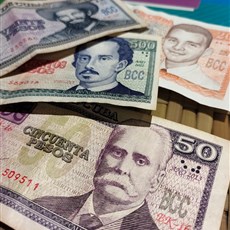
Cuban Peso
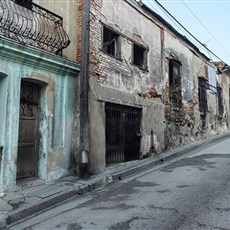
Santiago de Cuba
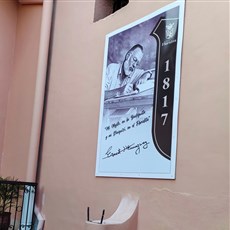
Santiago de Cuba
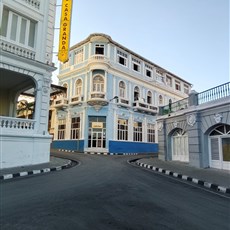
Cespedes, Santiago de Cuba

Cespedes, Santiago de Cuba

Cespedes, Santiago de Cuba

Cespedes, Santiago de Cuba
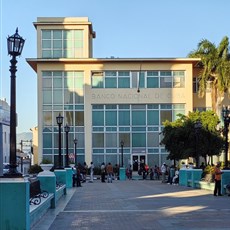
Cespedes, Santiago de Cuba (bank)
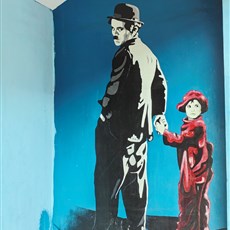
Santiago de Cuba
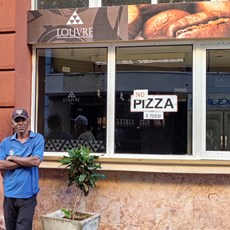
Santiago de Cuba

Santiago de Cuba

Santiago de Cuba
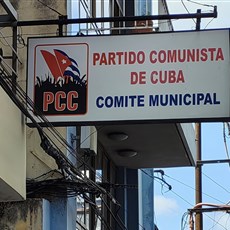
Santiago de Cuba
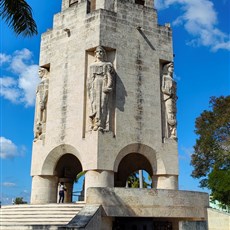
Santa Ifigenia Cemetery, Jose Marti grave

Santa Ifigenia Cemetery, Jose Marti grave
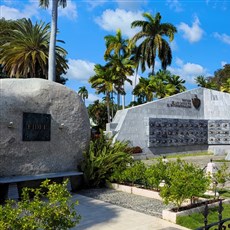
Santa Ifigenia Cemetery, Fidel Castro grave
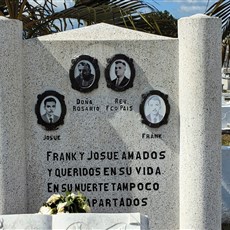
Santa Ifigenia Cemetery
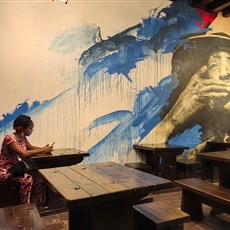
Bar Bohemio, Santiago de Cuba